A Guide To Winemaking Chemicals & Additives

Winemaking has a simplicity in which you take a few ingredients, grapes or fruit, sugar, water and yeast and produce a drink with great complexity. To get the most from these ingredients we need to help them along, this help comes from winemaking additives and chemicals.
This aspect of making wine is not as simple as it first seems. Winemaking additives tend to have obscure names and less than opaque descriptions so let’s cover what each additive or chemical is and how it helps to produce wine.
Table of Contents
You Can Make Wine Without Additives
Before we begin, I want to make it clear that there are by no means any reasons why you have to use additives when winemaking. In fact, some would say you can make better wine without the chemicals.
Where they do help is they make things more efficient and faster than maybe they would otherwise be.
For instance, wine finings is a whole group of additives that will help clear wine and they work very quickly, usually in the space of a few days. That doesn’t mean that you can’t make clear wine without finings, you most definitely can.
It will take a lot longer to make a clear wine and there is some chance it may not be quite so crystal clear. This is the trade-off between using additives and not using them.
Winemaking Additives & Chemicals
Let’s start off with the first group I just mentioned; finings. This group of additives, of which there is a whole array of types and their usage and timings of use may be different are used to speedily and really efficiently clear wines.
Wine Sulfites & Stabilizing Additives
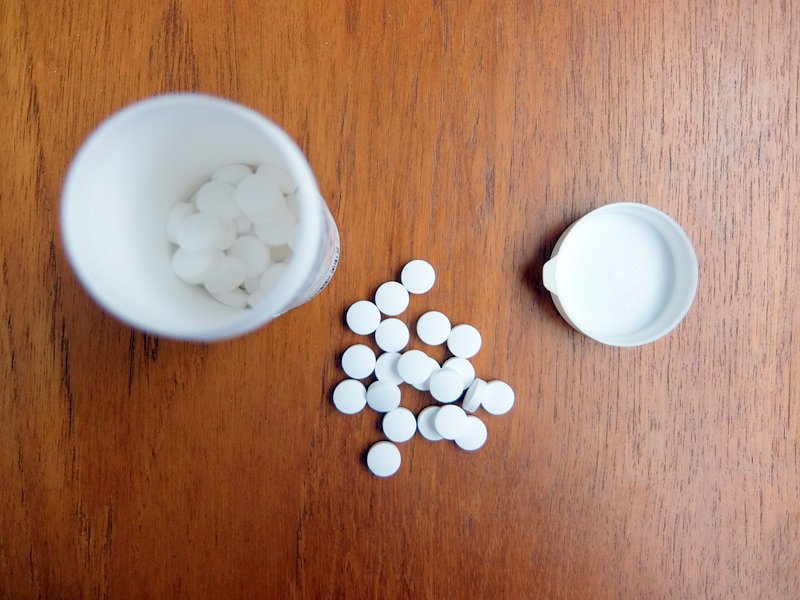
Campden Tablets / Metabusulfites
Campden tablets are pills made from sodium or potassium metabisulfite. Both chemicals do exactly the same thing but leave either a residual amount of either sodium or potassium.
Metabisulfites are used in wine making to sanitise fruits and wine musts as well as equipment. The chemical breaks down into sulphur dioxide which is an antioxidant so metabisulfites will also scrub excess oxygen from wine.
These chemical are widely used in the commercial wine industry which is why wine labels will state the wine contains sulfities.
Potassium Sorbate / Wine Stabiliser
Potassium sorbate might also be labelled as a wine stabiliser. It acts as an inhibitor of yeast growth and is added to the wine before bottling to prevent the wine from refermenting in the bottle.
Used alongside metabisulfites it does a really effective job of stabilising wines and is essential when you want to back sweeten wines by adding sugar back in before bottling otherwise this sugar will ferment out after packaging.
Fining Chemicals
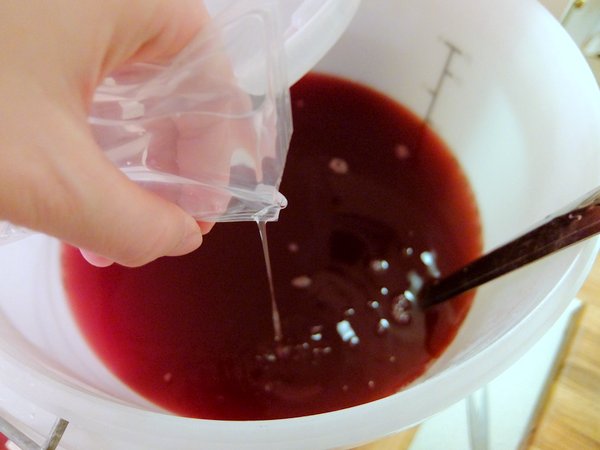
Kieselsol & Chitosan
These two finings are commonly sold together because of the way they interact.
Kieselsol is a product derived from silicon dioxide or silica that comes in a liquid form that can be dosed into the wine. Kieselsol is negatively charged and causes the positively charged particles such as yeast, proteins and haze causing compounds to bind together and sink to the bottom.
After 24 hours of adding Kieselsol to a wine, chitosan is added. Chitosan is a product derived from chitin which is derived from sources like the shells of shrimp or crabs. Chitosan works in a similar but opposite way to Kieselsol.
Chitosan is a liquid added to the fermenter which is positively charged, this binds negatively charged particles in the wine together. Creating clumps that fall to the bottom and leave a clear wine behind.
The use of both these finings together results in crystal clear wines in just a matter of days.
Bentonite
Bentonite is a type of clay sold in granules for easy measurement and addition to wine. The clay particles are highly absorbent and also negatively charged. When mixed with water and these factors bind positively charged particles floating in the wine which are the cause of the haziness.
Bentonite is sold as either sodium bentonite or calcium bentonite each will leave a residual amount of either sodium or calcium. Commercial winemakers usually use calcium bentonite as sodium levels are regulated in the US.
Generally, bentonite is used quite sparingly as it has the ability to strip out not just haze but also aroma and flavour compounds as well as reducing colour.
Gelatin
Gelatin is most commonly found in cooking but it is also used in both wine and beer making as a clarifying agent. Gelatin is made from the bones, hooves and connective tissues of animals which doesn’t sound appealing but if you eat meat then you will be consuming gelatin.
Gelatin is positively charged and is quite a strong fining so not much is necessary. Gelatin has the ability to strip out tannins and astringency from red wines so is well used in a case where the wine is overpowering.
Isinglass
Isinglass works in a similar way to gelatin. It is derived from a type of collagen found in fish, specifically dried fish swim bladders.
Isinglass comes in either a liquid slurry form or as dried flakes that need to be rehydrated. More commonly used in the production of cask beer but still a very effective fining for clearing wine.
It should be noted that wines fined with gelatin or isinglass cannot be labelled as vegetarian-friendly. Although there is very little of either fining in the finished wine as the finings are left behind with the sediment and lees when the wine is racked off.
Enzymes
Pectic Enzyme / Pectolase
Pectic enzyme is used to break down pectin in grapes and fruit. Pectin is in all fruit to varying degrees and it is what helps to maintain structure in the cells of the fruit.
Pectic enzymes break down this structure which is helpful for a few reasons. Breaking down pectin means more juice and flavour compounds can be extracted from the fruit. Pectin also causes a haze in wines that cannot be fined or filtered easily, using pectic enzyme breaks down these haze forming compounds
Acid Control Additives
Acid is a very important part of winemaking ensuring there is balance and the wine doesn’t come across as flat on the palate. Grapes often have plenty of acidity and they can be harvested at the peak time to ensure the acid levels at just right.
Making wine from fruit or floral wines there is less control over acid levels. This means we have to rely on additives to boost the acidity.
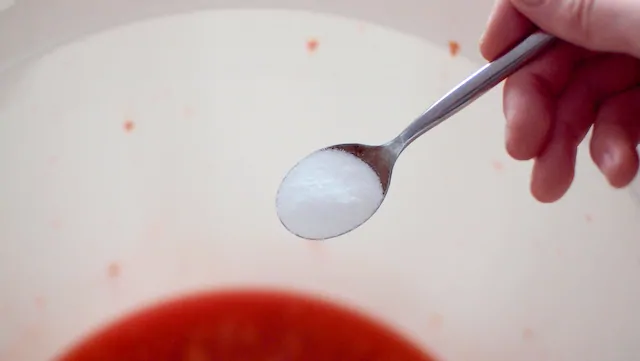
Mixed Acid / Acid Blend
As the name suggests acid blend is a mix of acids, most commonly; citric, tartaric and malic acid.
These three kinds of acid are the most common in grapes but are also in most other fruit but at lower levels. The mix of acid is often the quickest and easiest way to have a balanced acidity (without too much of any one type) when we are unsure of the particular acid content of the fruit we are making wine with.
Tartaric Acid / Malic Acid / Citric Acid
As well as blends of acid you can also buy acids individually. Most fruit wine recipes online suggest the use of citric acid but this is acid that has the lowest concentrations in grapes.
Tartaric acid has the highest concentration in grapes and it is important for the overall acidity or tartness of the wine. It also plays a role in the stability and the colour of the finished wine.
Malic acid is found in nearly all fruits and berries and is most akin to a tart green apple which has higher amounts of malic acid.
Citric acid is found in citrus fruits and adding this to wine will give the wine a citrus-like acidity and I feel is the harshest of all the acids.
De-acidifiers
Along with acids that are added to wine to make it more acidic there are de-acidifiers which are added to reduce levels of acidity.
Calcium Carbonate / Precipitated Chalk
To reduce the acid in wines that are too sour or mouth-puckeringly sharp calcium carbonate is used.
Calcium carbonate is powdered chalk that is added to the must and neutralises the excess acid. The acid forms tiny crystals that sink to the bottom of the vessel and the wine can be racked off.
Yeast Nutrients
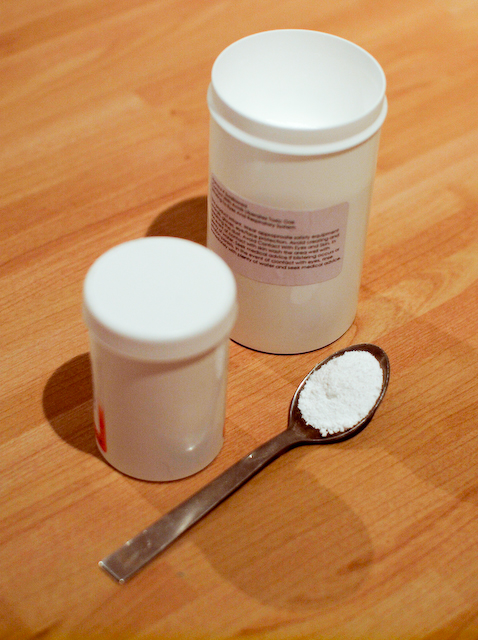
Yeast need assistance in order to grow, reproduce and ferment sugars and these need to be present in the must or juice. If there are insufficient nutrients in the wine then the yeast will be slow to reproduce, ferment sluggishly and can stall before fermentation is complete.
To prevent this from happening we can use yeast nutrients which come in a variety of forms.
Di-ammonium Phosphate
Diammonium phosphate or DAP is most commonly sold labelled simply as yeast nutrient. DAP is primarily a source of nitrogen which can be lacking in wine musts.
For healthy and efficient fermentation nitrogen is required by yeast and DAP is required in quite small doses to promote healthy, strong and viable yeast cells.
Yeast Energizer
Yeast energizer is most often a blend of additives that promote yeast health and provide a whole range of nutrients and compounds required by the yeast.
Different manufacturers often use different blends of ingredients but most often yeast energizers will include the following:
- Di-ammonium Phosphate – If you already use yeast nutrient then this will add to that dosage
- Yeast Hulls – These are yeast cells that have died which contain all the building blocks to be reconstituted into new yeast cells.
- Magnesium Sulfate – An additive that combines with DAP & other nutrients in the must to promote quick fermentation
- Vitamin B Complex – A mixture of vitamins that are required for yeast health and often lacking in some wine musts.
Tannins
Wine Tannin
Wine tannin or tannic acid is an additive which is sold as a reddish brown powder or liquid.
Tannin is found in fruits to varying degrees, fruit like grapes have lots of tannins in the skins as do apples and elderberries. Some fruit, however, have very little tannin and adding wine tannin brings a few benefits.
Tannin pronounces flavours and makes the wine more zesty, low tannin wines can be lacking and adding a small amount will bring flavours forward. Tannin also aids wine stability and will result in wines that age well compared to low tannin wines.

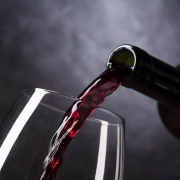


What a great website. So far I’ve not only found some great recipes but also a lot of answers to general questions that I had.
Thanks, Ian.
Enjoyed the website. Helps explain the additives we are using from our wine kit.
Glad it cleared things up for you!
I tried making wine about five years ago and found it fun but ran out of time to devote to it. I am now retired and would like to try it again. Should I purchase all new additives?
I would get new additives myself. I find they tend to get clumps and discolour if left around for too long.